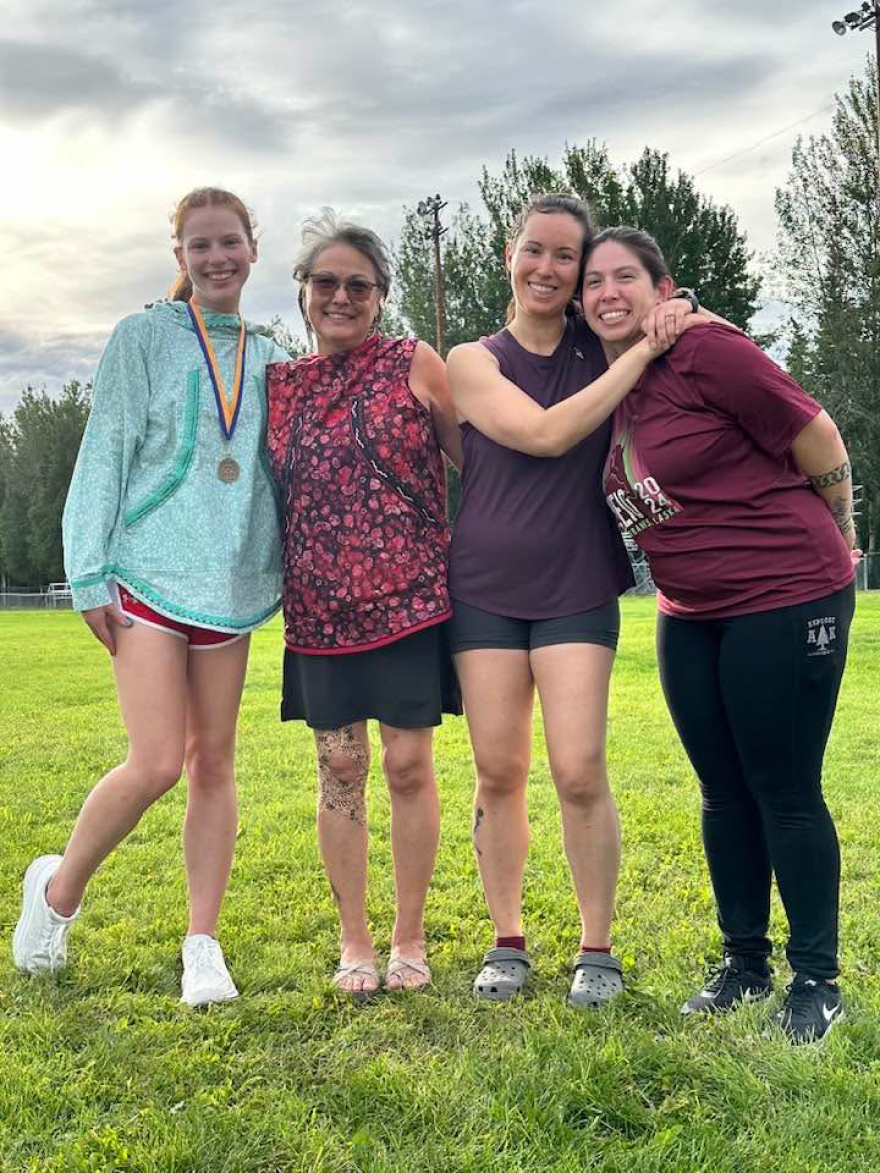Carol Pickett Hull was small in stature but a giant in her sport, and while she will always be remembered for the world record she set in 1989 for the One-Foot High Kick, she was much more than an athlete.
Fans of traditional Native games credit her for helping to build them into the success they are today.
Hull died on May 5 at the age of 61 at her home in Seward, where she had been working to rebuild the Qutekcak Tribe's Native Youth Olympics team.
It's a love and dedication to the sport that her friend Nicole Johnson remembers well. Johnson was in the seventh grade when she met Carol, who was a junior in high school.

She says they were, "tiny little powerhouses" back then.
At 5 feet tall, Nicole was only 4 inches shorter than Carol, an Inupiaq with a slight but muscular build.
"There's nothing that could stop us. Our height. Our weight. Our ages," said Johnson. "Nothing stopped Carol from doing what she loved to do."
Carol's specialty was the One-Foot High Kick, in which you jump with both feet and kick with one foot at a ball hanging on a string, then land on that foot without losing your balance. In the 1989 World Eskimo Indian Eskimo Olympics, Carol executed a flawless jump, to kick at a ball suspended at a remarkable 7 feet.
Reggie Joule remembers that moment.
"When she won the One-Foot High Kick, she was asked if she wanted to go for the record. She had this infectious excitement," said Joule, a 10-time gold medalist in the WEIO blanket toss. "She was jumping up and down. I want to break the record. I want to break the record."
In the early days of competition, Joule says the men grabbed the spotlight for their flashy performances. There were also twice as many men in the sport, but Carol and a group of other young women were about to change all that.
"They were coming onto this scene," Joule said, "with this energy but also with this hunger."
Joule says the women were eager to learn about their culture and took pride in its strengths, born from a struggle to survive in an unforgiving land.

Like many of the games, the One-foot High Kick has its roots in hunting and fishing traditions. The high kick could be seen for miles across the tundra, so hunters used it to signal a successful hunt.
Carol's 1989 record at the World Eskimo Indian Olympics would stand until last year, when Emily King, a Canadian from Whitehorse, would surpass her achievement of 7 feet by one more inch.
"We were all cheering her on," said Greg Nothstine, a longtime competitor and game official. "Carol was out there being her biggest fan and said, 'You can do it. You can do it!'"
For more than three decades Carol had cheered on many other athletes to beat her record, which Nothstine says is what defines Native Olympics – to compete, not against others, but against yourself to achieve your personal best.
"That is the idea of hoping for others," Nothstine said, "what we hope for ourselves and that's really just success."
Nothstine says traditional hunters always encouraged each other to improve their techniques for the benefit of the entire community.
Over the years, Carol seemed to be an endless source of encouragement. She coached. She officiated and became one of the sport's biggest cheerleaders.
"She loved teaching games," said Gina Kalloch, another longtime friend and former competitor. "That's another reason why so many young women came after her generation."
Gina met Carol at a WEIO competition in 1984. Soon afterwards, they became ambassadors for the sport and put on shows for tourists.

"She had dark hair and dark eyes and a gorgeous smile and a very engaging personality. She sparkled when she came in the room," Kalloch said. "I don't know if I'll ever meet anyone else like her. She just made such an impact on anyone in her sphere, and that included inmates at the Fairbanks Correctional Center."
Kalloch says when she and Carol volunteered to teach them games, it was a chance to share something meaningful.
"It goes back to, when I was hungry, you gave me food. When I was thirsty, you gave me drink," Kalloch said. "And when I was in prison you came to visit me and bring something to you that gives you a bit of self-confidence and pride in yourself."
When Carol Pickett Hull first entered the sport, the games were held in small gymnasiums with only a few observers. Today, the statewide Native Youth Olympics draws thousands of athletes and their fans, a reminder of how a little encouragement can go a long way.
Carol's memorial at the Alaska Native Heritage Center on Saturday drew many NYO families. And for the Hulls, the games were definitely a family affair.
Her husband Garry, like his wife, is also in the North American Indigenous Hall of Fame. The couple's two children, Garry Hull Jr. and Sarah, have also competed in Native games.
A poem the Qutekcak Tribe posted on her Facebook page was among many tributes to Hull's life and legacy. Here's an excerpt:

Copyright 2025 KNBA

